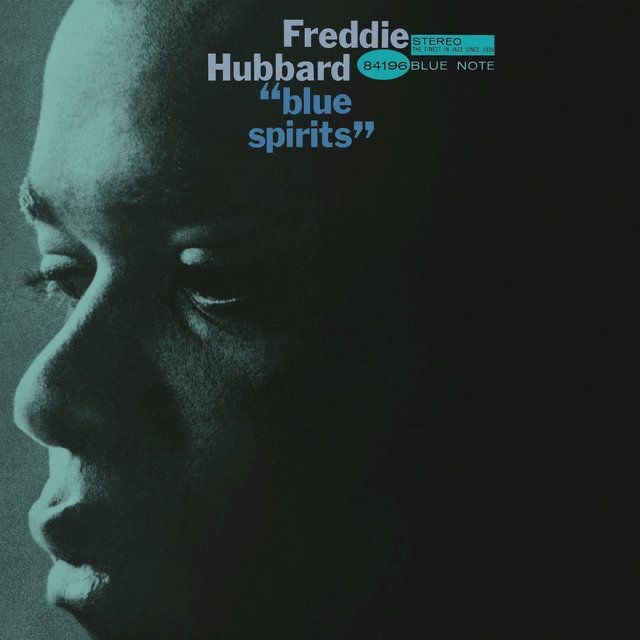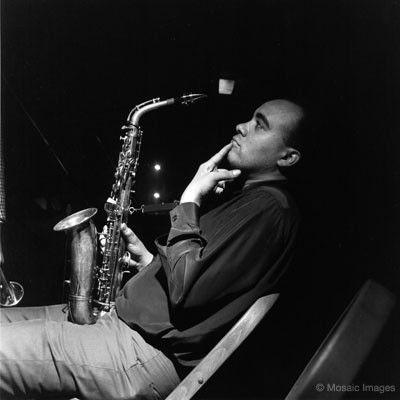Dive into the Power & Passion of ‘Tenor Madness
In the vast panorama of jazz, Sonny Rollins’ “Tenor…
“Blue Spirits” – it’s a siren’s song in the realm of jazz, the alluring crescendo in Freddie Hubbard‘s early Blue Note period. Hubbard, an agile master of the trumpet, weaves a tapestry of sound that still captivates today. The album encapsulates the audacious heart of the ’60s jazz, bristling with bluesy vigor and adventurous spirit.

In February and March of 1965, Hubbard and an ensemble of jazz heavyweights congregated in the renowned Van Gelder Studio. Blue Note Records, a label synonymous with quality jazz, had the privilege of releasing this gem. Those hallowed halls, in Englewood Cliffs, New Jersey, heard the birth of this masterwork.

Freddie Hubbard, the architect of “Blue Spirits,” is a fascinating character. His trumpet prowess, honed in his hometown Indianapolis, had already earned him stints with Art Blakey and Herbie Hancock. Prior to this session, his brilliant “Breaking Point” had just hit the shelves, further establishing his growing influence in the post-bop landscape.
James Spaulding and Joe Henderson brought their saxophones and flute to color Hubbard’s compositions. Spaulding, an unheralded virtuoso, had been busy collaborating with Sun Ra, while Henderson’s landmark “Inner Urge” was still fresh in the listeners’ minds. Their melodic sensibilities and rhythmic innovations were instrumental to “Blue Spirits.”

Harold Mabern, the piano maestro, and Larry Ridley on bass provided the harmonic foundation. Mabern, a Memphis native, had been sharing his blues-drenched piano lines with the Jazz Messengers. Ridley, then a mainstay at Prestige Records, had been accompanying the likes of Thelonious Monk and Sonny Rollins.

Finally, the rhythm section. Clifford Jarvis on drums, Big Black with his congas, and Kiane Zawadi‘s unique euphonium. Jarvis, an alumnus of Sun Ra’s Arkestra, was a versatile drummer known for his kinetic style. Big Black, a Florida native, had been expanding the role of congas in jazz. Zawadi, a rare euphonium player in jazz, lent an exotic color to the sonic palette.
“Soul Surge,” the opener, is a ten-minute journey through the heartland of blues. Hubbard’s trumpet, fiery and emotive, trades punches with Henderson’s tenor saxophone, while Mabern’s gospel-tinged piano underscores their dialogue.
“Blue Spirits,” the title track, is an exquisite study in mood and atmosphere. Spaulding’s flute, ethereal and haunting, sets the stage for Hubbard’s lyrical musings. The result is a sonic landscape as vivid as a van Gogh painting.
“Outer Forces” – my personal favorite – is a thrilling rollercoaster ride. Hubbard’s virtuosic technique takes center stage here, his trumpet lines spiraling over the rhythmic tumult with reckless abandon. Mabern’s piano provides an anchor, his steady chords a lighthouse in the storm.
“Cunga Black” is a Latin blues number, a testament to the versatility of the ensemble. Big Black’s congas drive the rhythm, setting the pace for the horn line’s dance. It’s an infectious groove, impossible to resist.
The album straddles the line between hard bop and avant-garde. Hubbard’s compositions, while rooted in the blues tradition, aren’t afraid to venture into uncharted territories. The result is a sound that is both familiar and surprising, a heady brew of tradition and innovation.
Upon its release, “Blue Spirits” was met with critical acclaim. It was praised for its adventurous spirit, its seamless blending of styles. It’s a testament to Hubbard’s prowess as both a composer and band leader. The album quickly became a staple in the collections of jazz enthusiasts, its influence seeping into the fabric of the genre.
Fast-forward to today, and “Blue Spirits” continues to hold its own in the annals of jazz. Its timeless quality, its ability to both reflect and transcend its era, keeps it relevant. It’s a testament to the dynamism of jazz, a genre that constantly evolves while staying true to its roots. “Blue Spirits” is not just a snapshot of its time; it’s a living, breathing entity that continues to inspire.
“Blue Spirits” is a testament to Hubbard’s creative vision, and a shining example of the golden era of Blue Note Records. The album’s adventurous spirit, coupled with the top-tier musicianship on display, ensures its place in the pantheon of jazz classics.
The album’s legacy is further cemented by the musicians who continue to be inspired by it. Artists like Ambrose Akinmusire and Jeremy Pelt have cited Hubbard as a major influence, and “Blue Spirits” as a pivotal listen. Its impact is woven into the tapestry of contemporary jazz, a testament to its enduring appeal.
In conclusion, “Blue Spirits” is a landmark album that continues to resonate. It’s a testament to Freddie Hubbard’s genius, and a beacon of the transformative power of jazz. This album is not just a piece of music; it’s a journey, an experience, a slice of history, and above all, a celebration of the human spirit’s boundless capacity for creativity. As the years roll on, “Blue Spirits” remains a timeless testament to the beauty and power of jazz.